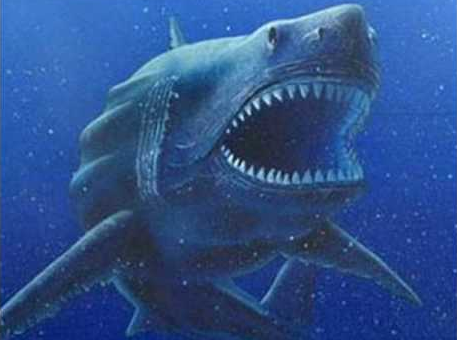By Dane Lorica, | January 17, 2017

Scientists say the Megalodon probably became extinct because it was a picky eater. (YouTube)
A new finding indicates that the world's largest shark, Megalodon, fell to extinction during the Pliocene Epoch because of the demise of its preferred prey, small whales.
Like Us on Facebook
Director of Animal Care at the Bay Institute Aquarium Foundation, Christina Slager, noted that while climate change may serve as a traditional explanation for the megalodon's disappearance, based on the remains, the extinct shark opted for warmer waters. "The Ice Age began when this species went extinct, but other factors in addition to climate change could explain why the shark died out," she added.
Fossilized bones of the shark's prey served as evidence to support the latest scientific theory that the megalodon went extinct after their favorite preys vanished. According to the authors, the bite marks on the fossils reveal what species served as the 18-meter long predator's favorite food.
The fossils discovered in Aguada de Lomas in southern Peru belong to the non-existing baleen whale and early seal. According to the authors, both Piscobalaena Nana and Piscophaca Pacifica were nutritious and easy to catch making them good preys for the carnivorous fish.
Professor Kenshu Shimada mentioned that there might be "co-extinction of prey and predator." He explained that sharks with "specialized diets may be particularly prone to extinction if a major shift in global oceanic conditions takes place."
The authors noted that "the disappearance of the last giant-toothed shark could have been triggered by the decline and fall of several dynasties of small to medium-sized baleen whales in favour of modern, gigantic baleen whales."
Slager said that the modern great white sharks also prefer sea lions and seals as their preys but are scavengers of dead whales. However, compared to sharks, pygmy whales, and baleen whales are now much bigger in size.
Shimada explained that the changes in the animals' sizes might be "due to the evolution of their migration behavior where large body sizes must have helped them to travel long distances and exploit food sources not only along the coasts but also in the middle of the ocean." However, he said that it is still a speculation whether the world's largest shark "migrated long distances."
The report was published in the Palaeogeography, Palaeoclimatology, Palaeoecology journal.
-
Use of Coronavirus Pandemic Drones Raises Privacy Concerns: Drones Spread Fear, Local Officials Say

-
Coronavirus Hampers The Delivery Of Lockheed Martin F-35 Stealth Fighters For 2020

-
Instagram Speeds Up Plans to Add Account Memorialization Feature Due to COVID-19 Deaths

-
NASA: Perseverance Plans to Bring 'Mars Rock' to Earth in 2031

-
600 Dead And 3,000 In The Hospital as Iranians Believed Drinking High-Concentrations of Alcohol Can Cure The Coronavirus

-
600 Dead And 3,000 In The Hospital as Iranians Believed Drinking High-Concentrations of Alcohol Can Cure The Coronavirus

-
COVID-19: Doctors, Nurses Use Virtual Reality to Learn New Skills in Treating Coronavirus Patients







